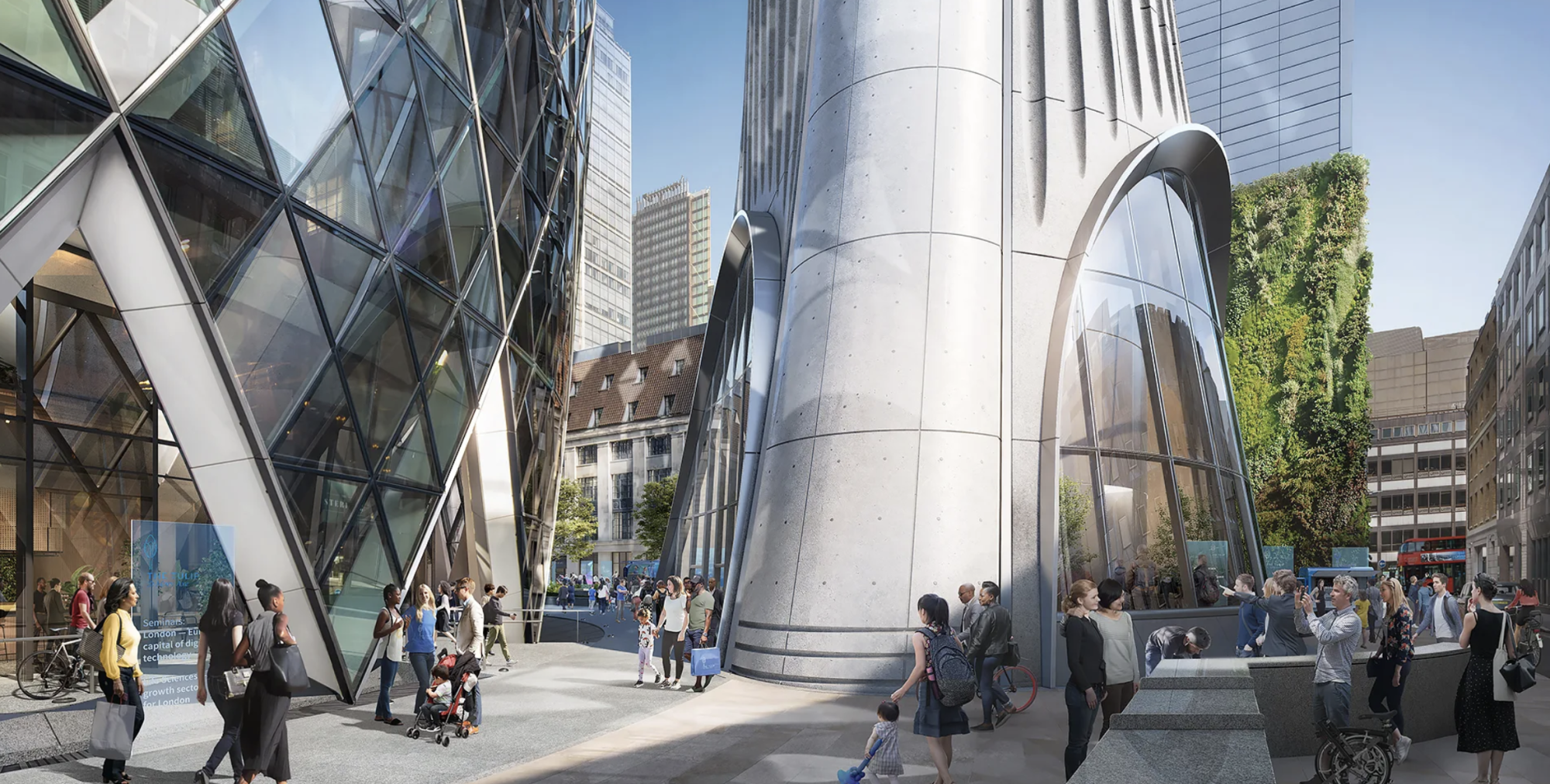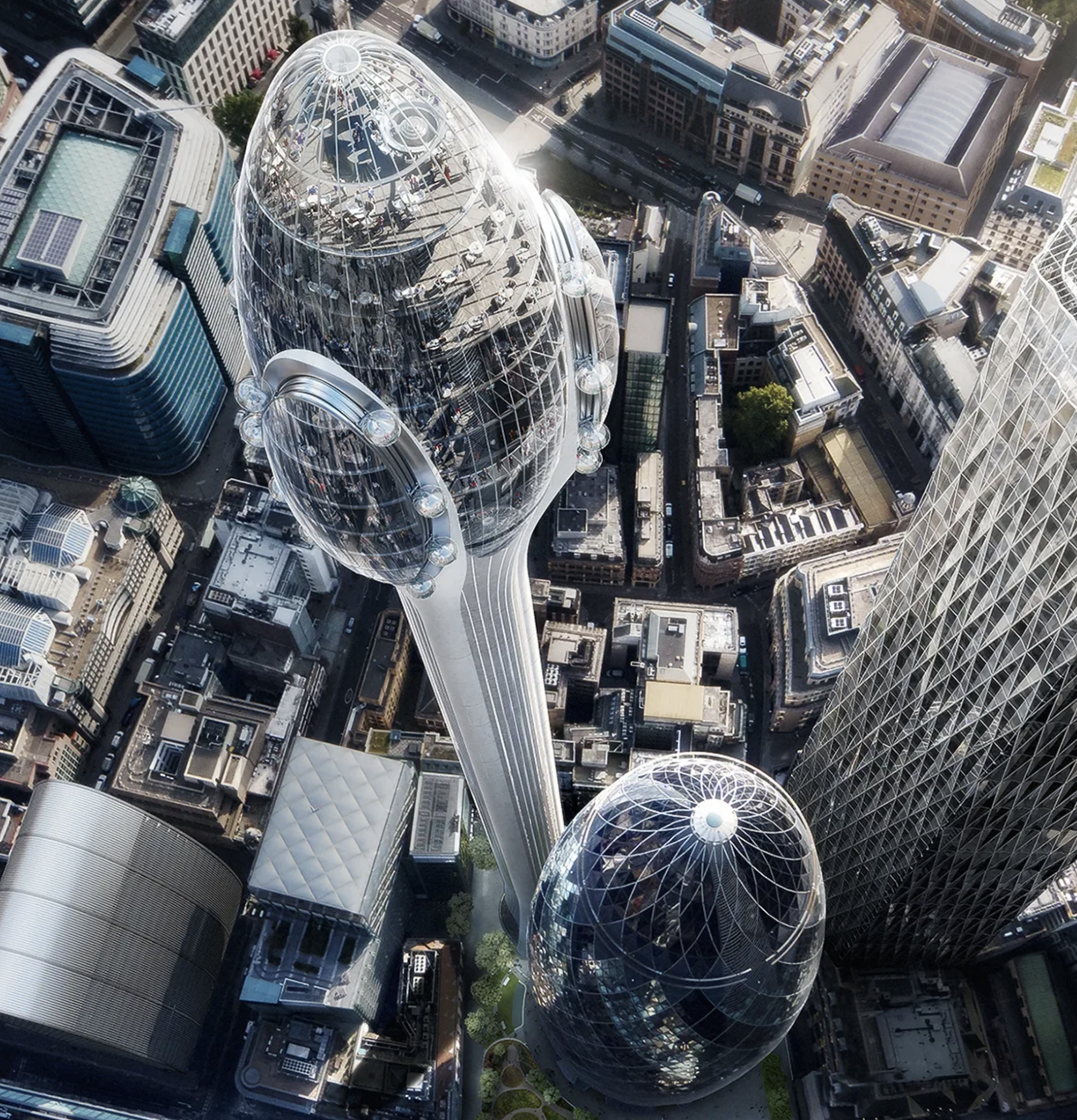Holborn Viaduct Offices Application Approved
An office-led development that sits across two levels on Holborn Viaduct and Farringdon Street has been granted planning permission. Royal London Asset Management has...
Read Full Article
The high-tech skyscraper next to the Gherkin was supposed to be a new urban square for Londoners, but the government has rejected plans for its construction.
The Tulip would have been the tallest building in the City of London and the second highest in the capital, after The Shard.
Housing Secretary Michael Gove’s lengthy decision letter describes several concerns including disrupting the balance of heritage and modern buildings, the proposed use of unseasonable building materials and the potential to disrupt views of nearby heritage sites.
The 12-story building was initially approved by the City of London Corporation, but then rejected by Mayor Sadiq Khan.
The Foster & Partners development cited itself as a sustainable asset to London’s skyline, with a new education facility for the use of London state schools. So, what went wrong?
One major stumbling block for The Tulip was its domination on London’s skyline.
David Nicholson RIBA IHBC, an Inspector appointed by the Secretary of State for Communities and Local Government, concluded that on the walk across Tower Bridge, the Tulip would appear to move right the way through the airspace behind the White Tower and this would be “highly apparent and intrusive to the viewer.”
He also stated that the open sky around the White Tower would be “severely affected” by the Tulip and would disrupt the sensitive balance between the City and the world heritage site.
An appeal argued that the scheme’s public benefits demonstrably outweigh any specific alleged heritage harm. However, The Secretary of State decided that the heritage harm would not be outweighed by the public benefits of the proposal.
It was decided that there would be additional harm to the settings of other designated heritage assets, notably the church of St Botolph without Aldgate, 10 Trinity Square and Trinity House
Despite the project aiming for a BREEAM rating of outstanding, the decision letter rules that the extensive measures that would be taken to minimise carbon emissions during construction would not outweigh the highly unsustainable concept of using vast quantities of reinforced concrete for the foundations and lift shaft.
Foster & Partners, member of the Low Carbon Concrete Group of the Green Construction Board, argued that the material choice was a key part of the design process and that concrete would reduce embodied energy by 31 per cent compared with steel.

Picture: a photograph giving a bird's eye view of the Tulip and Gherkin
The CEO of Historic England called the attraction “a lift shaft with a bulge” in 2019, citing its impact on the Tower of London
Historic England has welcomed the rejection decision, saying that they have long been of the opinion that The Tulip would be visually intrusive and highly incongruous from key viewpoints of the Tower, detracting from the experience of visiting the site for millions of tourists and Londoners.
It is also their view that it would harm the significance of the Tower of London as a World Heritage Site, and therefore the proposals ran contrary to local and national planning policies.
Developer Bury Street Properties told The Guardian newspaper: “We are disappointed by the UK government’s decision to refuse planning permission for the Tulip.
“In our opinion, this project represented a unique opportunity to reaffirm London’s world-leading reputation in architecture, culture, education, and tourism.”
Judith Dupré, author of Skyscrapers, A History of the World's Most Extraordinary Buildings, questioned the future of skyscrapers themselves in a recent BBC article. She states that that height and design restrictions on new skyscrapers such as The Tulip might mean their golden age is over:
“Skyscrapers convey power, economic might, and technical prowess - attributes that are irresistible to nation builders.
“The pandemic has compelled more expansive thinking about tall buildings and the people who work in them, calling for flexibility, adaptability, access to nature, and towers that conserve more and consume less.”
Picture: a photograph of the exterior of the Tulip. Image Credit: The Tulip
Article written by Ella Tansley | Published 19 November 2021
An office-led development that sits across two levels on Holborn Viaduct and Farringdon Street has been granted planning permission. Royal London Asset Management has...
Read Full ArticleThe remains of London’s first Roman Basilica have been discovered underneath the basement of 85 Gracechurch Street, near Leadenhall Market in the City of...
Read Full ArticleBrookfield Properties has secured approval from The City of London’s Planning Committee for a 54-storey tower at 99 Bishopsgate. Watch the...
Read Full ArticleA 36-storey office building has been approved for the site at 60 Gracechurch Street. The building will provide 37,000 square metres of Grade A office space and will be...
Read Full ArticlePlans for a major regeneration programme at Dagenham Dock have been abandoned. Smithfield and Billingsgate were set to be co-located for the first time at a new...
Read Full ArticleThe ongoing saga of the construction of the 1 Undershaft skyscraper continues with updated proposals submitted featuring a comprehensive redesign of the ground...
Read Full ArticleISS’ longstanding partnership with the City of London Corporation has been extended for five years. There is also the option to extend this for a further four...
Read Full ArticleThe City of London Corporation has won a planning award for its role in developing a new home for the Migration Museum in the Square Mile. Planning permission was...
Read Full ArticleThe City of London Corporation has published new AI images that show the future skyline of the Square Mile, predicting what it will look like in 2030. Watch...
Read Full ArticleThe first geothermal borehole has been completed on the Salisbury Square Development, making it the first scheme in the Square Mile to use a standalone closed loop...
Read Full Article